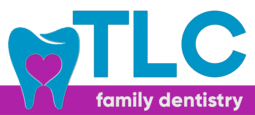Not all dental cleanings are created equal. Find out why some hygiene appointments cost more than others and learn how you can save time and money in the dental chair.
A “regular” cleaning is clinically called prophylaxis or a prophy cleaning and is a preventative measure to prevent periodontal disease. It includes removing plaque and tartar from tooth surfaces and just below the gum line. Sometimes, especially if you haven’t been to the dentist in a while, the buildup of tartar and plaque is too much to remove with the hand instruments that our hygienists use and, in some cases, requires the use of anesthetic and more than one visit, resulting in a costlier dental appointment.
This is when a “simple cleaning” goes from being a preventative measure to a treatment and maintenance measure. When this happens, you might be told you need a periodontal cleaning, root planing, or a deep scaling. These cleanings remove the tartar that wedges itself below the gum line and irritates and inflames the gum, causing what’s called gingivitis.
Gingivitis is the first stage of periodontal disease. Gingivitis is an inflammation of the gums causing bleeding, red swollen gum tissue, and bad breath. A cleaning and more frequent professional hygiene appointments can treat and usually reverse this stage of gum disease so long as you follow a regular at-home maintenance routine and commit to a strict professional hygiene schedule.
Time to Deep Clean
If gingivitis is left untreated, it can turn into periodontitis. At this stage, tartar builds up between the gum and tooth root creating periodontal pockets that can no longer be cleaned with regular at-home care. A more frequent recare schedule, usually every three to four months, and specialized equipment including ultrasonic scalers can remove the buildup and help the pocket stay clean, so no further damage is done. Think of tartar as a wedge between the tooth and the gum. The more it builds up, the harder it is for you to clean yourself. And the more the tartar builds up, the more the gum is pushed from the tooth. It’s a cycle, and the only way to effectively clean below the gum line is having a qualified dental professional remove it with specialized equipment.
Once periodontitis progresses to a point where the bone starts to recede, it is considered advanced periodontal disease which includes bone loss due to extensive pocketing. This causes loose teeth which can result in lost teeth and a shift in your bite if not properly taken care of. If too many teeth are lost, it can radically alter your bite and cause worse problems than a gap in your smile. At this stage, regular cleanings are no longer effective, and we may recommend one of many procedures to help manage the infection, like laser periodontal treatments, bone grafting, or time release antibiotics placed in the periodontal pocket itself. Each of these treatments requires dedication to an excellent home care routine, so the efforts of your hygienist and dentist don’t go to waste.
An Ounce of Prevention
The good news is, gum disease can be prevented with regular professional cleanings and a good home care routine that includes daily flossing and brushing for two minutes at least twice a day. A little extra time spent on proper home care and regular cleanings can help save a lot of time and money down the road.




